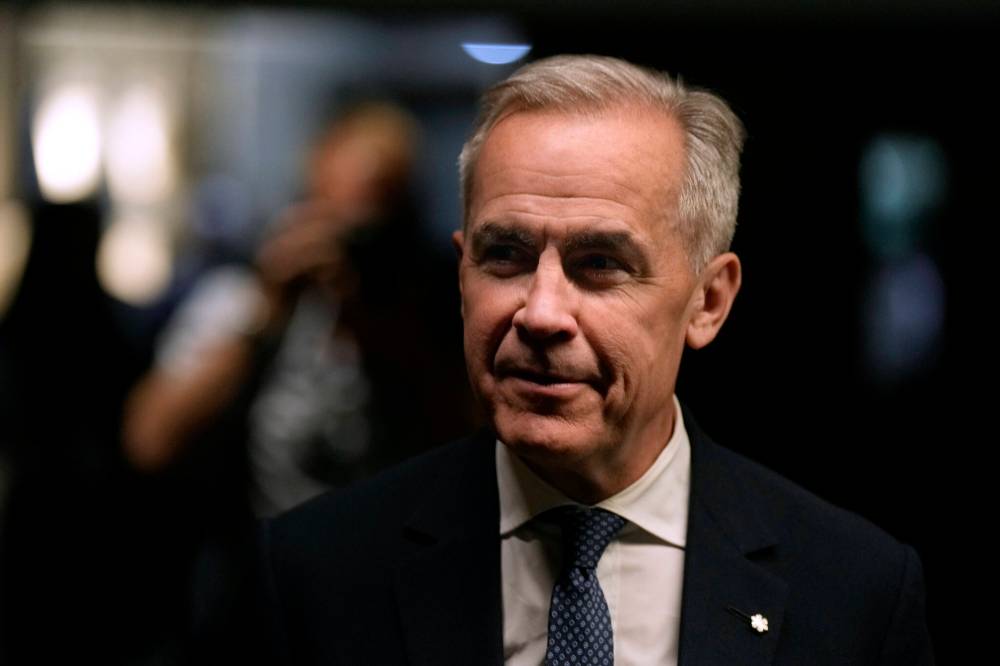Promises of big changes don’t always deliver
Advertisement
Read this article for free:
or
Already have an account? Log in here »
To continue reading, please subscribe:
Monthly Digital Subscription
$0 for the first 4 weeks*
- Enjoy unlimited reading on winnipegfreepress.com
- Read the E-Edition, our digital replica newspaper
- Access News Break, our award-winning app
- Play interactive puzzles
*No charge for 4 weeks then price increases to the regular rate of $19.00 plus GST every four weeks. Offer available to new and qualified returning subscribers only. Cancel any time.
Monthly Digital Subscription
$4.75/week*
- Enjoy unlimited reading on winnipegfreepress.com
- Read the E-Edition, our digital replica newspaper
- Access News Break, our award-winning app
- Play interactive puzzles
*Billed as $19 plus GST every four weeks. Cancel any time.
To continue reading, please subscribe:
Add Free Press access to your Brandon Sun subscription for only an additional
$1 for the first 4 weeks*
*Your next subscription payment will increase by $1.00 and you will be charged $16.99 plus GST for four weeks. After four weeks, your payment will increase to $23.99 plus GST every four weeks.
Read unlimited articles for free today:
or
Already have an account? Log in here »
Sometimes, big numbers in politics are more performative than anything else.
They’re a way of demonstrating that you are taking an issue seriously — and in the process, make a memorable mark with voters who might otherwise lose their way in the thicket of promises of smaller numbers and lesser goals.
Perhaps the best recent demonstration of that was the efforts of the U.S. Department of Government Efficiency, led by Elon Musk, which, when it was launched, claimed it could cut US$2 trillion from the U.S. federal budget. That ambitious target was lowered to US$1 trillion, and then to US$190 billion, and the numbers are still in dispute. (At the same time, budgetary moves by the Trump government wracked up far more new costs that Musk’s effort saved.)

Adrian Wyld / The Canadian Press
Prime Minister Mark Carney
But back to our own Canadian big numbers.
This week, details came out about a letter from Prime Minister Mark Carney’s finance minister, Francois-Philippe Champagne, to federal cabinet members, telling them to find “ambitious” savings in their program budgets by the fall. The goal? To cut program spending by 7.5 per cent by April of 2026, followed by another 10 per cent spending cut by 2027, and a further 15 per cent by 2028. The money saved is needed to address other federal commitments — like the increase in federal defence spending that Carney has already committed to.
The Globe and Mail printed leaked portions of the ministerial letters; “You will be expected to bring forward ambitious savings proposals to spend less on the day-to-day running of government, and invest more in building a strong, united Canadian economy.”
It’s more than just a significant cut to spending — with numbers like that, it would be, in fact, one of the largest cuts to program spending in living memory for many Canadians. To find a similar-sized cut, you’d have to go back to the austerity measures brought in by then-prime minister Jean Chretien and his finance minister, Paul Martin, in the mid-1990s.
For Canadians, it means things governmental will necessarily be slower, more complicated and more time-consuming. The thing about cuts in programs is that they involve shrinking the size of the federal civil service, because labour costs — salaries and benefits — are the largest single cost in any workplace, federal government or otherwise.
Remember how frustrated and angry the Canadian public was with something as simply as lengthy delays for new passports? Or the ire triggered by lengthy delays in handling tax issue complaints and reviews by the Canadian Revenue Agency? Or the frustrations over staffing issues making it impossible to understand how to handle opaque instructions when the CRA brought in new rules about how Canadians had to file in new and complicated documents for something as simple as acting as a cosigner on a mortgage for a child’s house purchase?
People regularly complain about the perceived lack of efficiency in government workplaces. And shrinking the federal civil service won’t do anything to help things run more smoothly, no matter how much the federal government moves to chatbots and non-human technology to bolster its efforts to serve the public.
There’s very little detail of how those savings will work, or just where the belt-tightening is most likely going to be felt. But giving the broad reach of the plan — across all federal departments — it’s impossible for the impact of the cuts not to trickle down to any Canadian’s direct dealings with the federal government.
Will the big promises actually end up being big cuts? Time will tell.
But you’ll know it when you feel their impact.



